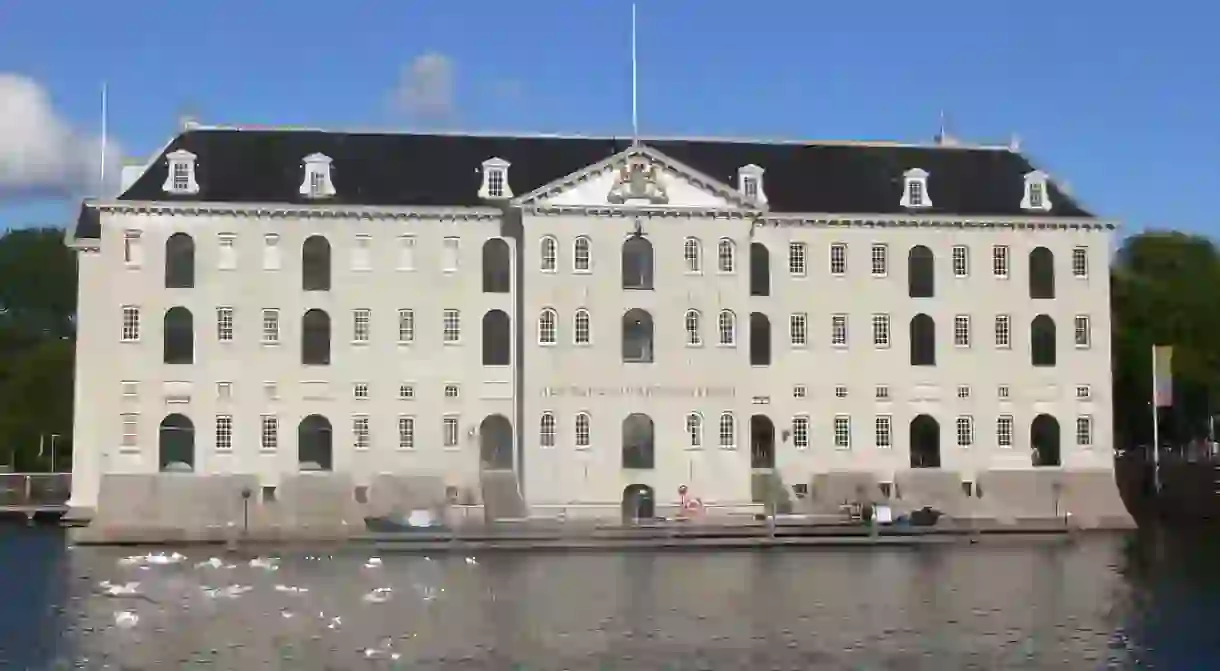Where To Find Dutch Golden Age Architecture In Amsterdam

In the 17th century, the Netherlands experienced a period of unprecedented prosperity called the Dutch Golden Age. During this time, a number of monumental buildings were constructed around Amsterdam – many of which were designed to reflect the city’s wealth, cultural standing and global significance. Here’s our guide on where to spot some of these impressive structures.
Hermitage Amsterdam
Building, Museum

The Dutch branch of the Hermitage Museum is housed inside a 17th century complex called Amstelhof, which was originally owned by a charitable religious organization. For a long time the building was used as a retirement home, and its enormous outer wings provided shelter to poor or widowed elderly women. Its classical facade looks directly onto the river Amstel and conceals Amstelhof’s massive inner courtyard.
Royal Palace Amsterdam
Building

Although it is now known as the Royal Palace, the monumental building that stands on the western side of Dam Square was originally owned by the city’s council rather than its aristocracy. This palatial structure was built during the height of the Dutch Republic – a period when Amsterdam was among the most prosperous cities in the world. To symbolize the city’s status, its municipality constructed a massive town hall that paid homage to stately Roman and Ancient Greek architecture. Eventually, this building passed into the hands of the Dutch Royal Family and was duly renamed.
Westerkerk
Cathedral, Church

Westerkerk is the largest cathedral in the Netherlands and was built during the Dutch Golden Age to accommodate the country’s newly converted Protestant population. Its principal architect, Hendrick de Keyser, designed the church according to Dutch Renaissance standards and centered the structure around a floor plan that is shaped like a Greek cross. Today the church is still used by a Protestant congregation and is also open to the public.
Zuiderkerk
Art Gallery, Church, Building, Cathedral

Zuiderkerk was Amsterdam’s first Protestant cathedral and was designed by the same architect as the Westerkerk. The church was completed by 1611 and provided the Nieuwmarkt area of Amsterdam with a place of worship. Its design reflects Protestantism’s sober sensibilities and the religion’s commanding presence within Amsterdam.
Het Scheepvaartmuseum
Building, Museum

Het Scheepvaartmuseum (the National Maritime Museum) is located inside a massive former warehouse called ’S Lands Zeemagazijn that was originally owned by Amsterdam’s Admiralty. The building’s design combines elements from classical Dutch architecture, including imposing facades and sharp edges, with functional features. When it was completed in 1656, the building was among the largest industrial sites in the world, and its presence in Amsterdam helped turn the city into a global maritime power.
Trippenhuis
Building, University

During the 17th century, many affluent citizens built mansions on the banks of Amsterdam’s canal rings. Trippenhuis is one the largest of its kind, and was originally owned by a wealthy Dutch weapons dealer. The building has a huge facade, spanning seven windows, that is laced with military symbolism. Today Trippenhuis houses a prestigious research center called the Royal Netherlands Academy of Arts and Science.













